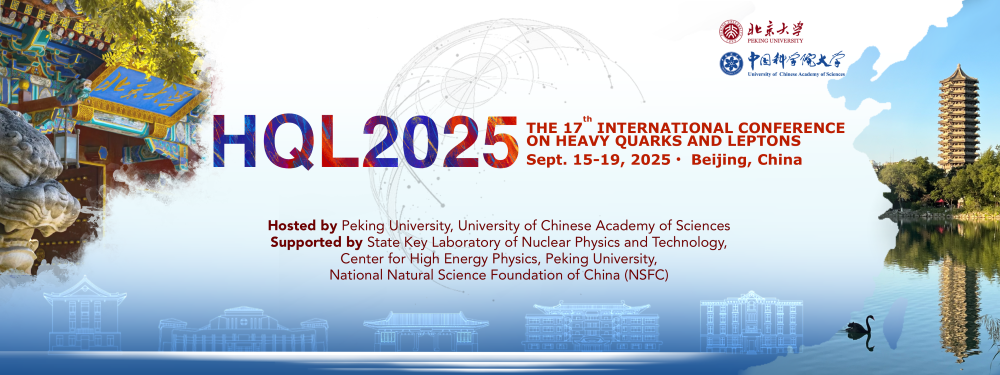Speaker
Description
In the study of the $J/\psi$$J/\psi$ invariant mass spectrum, the CMS collaboration has observed three distinct structural features, labeled as X(6600), X(6900), and X(7100). In-depth analysis of the experimental data suggests that a theoretical model incorporating the quantum interference effects of these three resonance states best describes the observed mass spectrum distribution characteristics. This discovery implies that these three states share the same spin-parity quantum numbers ($J^{PC}$), providing crucial clues for understanding the nature of these exotic states.
As an extension in the $ J/\psi\psi(2S)$ decay channel, the search is performed for structures near threshold in the $J/\psi\psi(2S) \rightarrow \mu^{+} \mu^{-} \mu^{+} \mu^{-}$ channel using a sample of proton-proton collisions at $\sqrt{s} = 13.0~\mathrm{TeV}$ and $13.6~\mathrm{TeV}$ recorded by the CMS detector at the CERN LHC. The data correspond to an integrated luminosity of about $315~\mathrm{fb}^{-1}$. A threshold structure is observed near $6900~\mathrm{MeV}$ with a significance in excess of five standard deviations ($>$5$\sigma$), and there is also evidence (4.3$\sigma$) for a second peak, in a model where the structures mutually interfere. The mass and width of the two peaks are measured to be $~6876^{~+46}_{~-29} \pm 110$, $~253^{~+290}_{~-100}\pm 120~\mathrm{MeV}$ and $~7169^{~+26~+74}_{~-52~-70}$, $~154^{~+110~+140}_{~-82~-160}~\mathrm{MeV}$, which are consistent to within one standard deviation of the X(6900) and X(7100) structures previously observed in the $J/\psi$$J/\psi$ spectrum.

